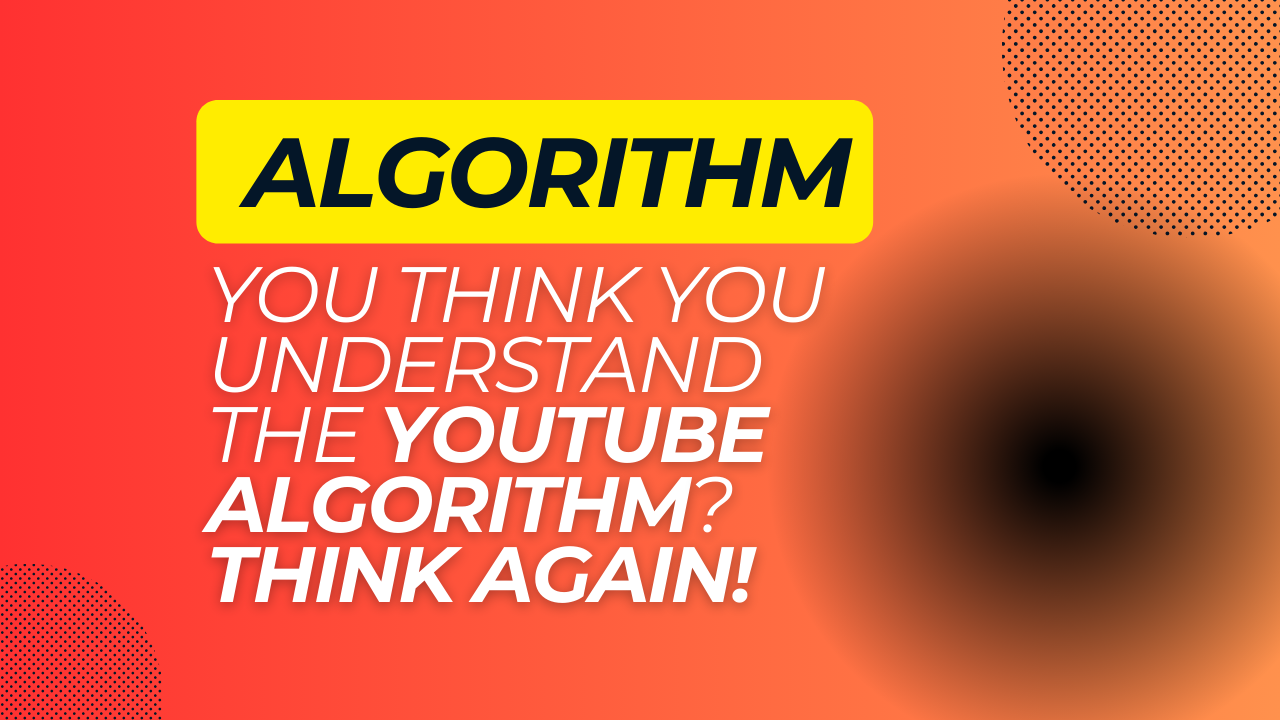You Think You Understand the YouTube Algorithm? Think Again!

YouTube's algorithm is as influential as it is elusive. Every day, it decides the fate of countless videos, propelling some to viral fame and relegating others to obscurity. But what fuels its decisions? How does YouTube determine which video to recommend and which to sideline? Let's unravel the mystery.
The Evolution of YouTube's Algorithm
In YouTube's infancy, video success was often measured by view counts. This led creators to adopt 'clickbait' tactics. Recognizing this, YouTube evolved its algorithm to prioritize watch time over mere clicks, rewarding videos that held viewers' attention.
What YouTube Wants: The Big Picture
At its core, YouTube wants to keep viewers on its platform for as long as possible. To achieve this, the algorithm promotes videos that:
Engage viewers for extended periods: Not just clicks, but prolonged watch time.
Encourage further viewing: Videos that lead viewers to watch more videos are favored.
Enhance user satisfaction: 'Likes', 'shares', and positive comments signal to YouTube that viewers enjoyed the content.
Factors That Influence the Algorithm
Click-Through Rate (CTR): The percentage of people who click on your video after seeing it in their feed.
Audience Retention: The average percentage of your video that viewers watched.
Engagement Metrics: Likes, shares, comments, and subscribes.
Upload Frequency: Consistently uploading can lead to more channel authority.
Video Length: While there's no 'perfect' length, longer videos can accumulate more watch time.
Personalized Factors: YouTube considers a user's search and watch history when recommending videos.
Studies & Insights into the Algorithm
A study by Pew Research Center found that videos about politics, conspiracy theories, or controversial subjects are less likely to be recommended by YouTube. This is a conscious effort by YouTube to curb the spread of misinformation.
The Snowball Effect
Videos that perform well initially (high CTR, good audience retention) get promoted more by the algorithm. This, in turn, leads to even more views, creating a snowball effect. This phenomenon explains why some videos explode in popularity.
The Dark Side of the Algorithm
While the algorithm has its merits, it isn't flawless. Its heavy reliance on watch time has sometimes promoted sensational or misleading content. Recognizing this, YouTube continually refines its algorithm to prioritize user well-being and accurate information.
The Role of SEO: Why Metadata Matters
YouTube is the second-largest search engine after Google. Tags, titles, descriptions, and captions help the algorithm understand your content's context. Tools like VidAI.help, powered by advanced AI like GPT-4, can assist creators in optimizing this metadata.
Final Thoughts: It's Not Just About the Algorithm
While understanding the YouTube algorithm is crucial, it shouldn't be the only focus. Creating authentic, high-quality content that resonates with viewers will always be the cornerstone of YouTube success. The algorithm might guide viewers to your door, but your content determines if they stay.
Tags: YouTube Algorithm, Video SEO, Watch Time, Audience Retention, CTR, Video Engagement, YouTube SEO, VidAI.help, Content Creation







